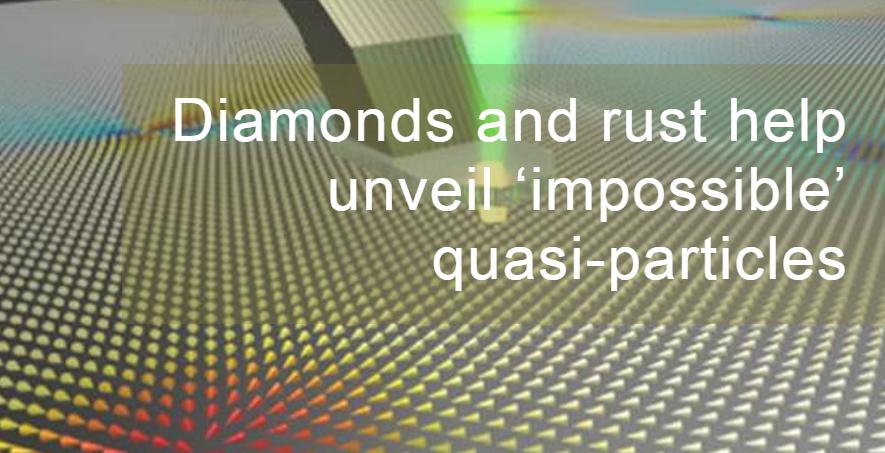
Researchers have discovered magnetic monopoles – isolated magnetic charges – in a material closely related to rust, a result that could be used to power greener and faster computing technologies.
Researchers led by the University of Cambridge used a technique known as diamond quantum sensing to observe swirling textures and faint magnetic signals on the surface of hematite, a type of iron oxide. The researchers observed that magnetic monopoles in hematite emerge through the collective behaviour of many spins (the angular momentum of a particle). These monopoles glide across the swirling textures on the surface of the hematite, like tiny hockey pucks of magnetic charge. This is the first time that naturally occurring emergent monopoles have been observed experimentally.
The research has also shown the direct connection between the previously hidden swirling textures and the magnetic charges of materials like hematite, as if there is a secret code linking them together. The results could be useful in enabling next-generation logic and memory applications. According to the equations of James Clerk Maxwell, a giant of Cambridge physics, magnetic objects, whether a fridge magnet or the Earth itself, must always exist as a pair of magnetic poles that cannot be isolated.
"In the 19th century, it was hypothesised that monopoles could exist. But in one of his foundational equations for the study of electromagnetism, James Clerk Maxwell disagreed.
If monopoles did exist, and we were able to isolate them, it would be like finding a missing puzzle piece that was assumed to be lost. The magnets we use every day have two poles: north and south," Professor Mete Atatüre, Dept of Physics, University of Cambridge
Professor Mete Atatüre is Head of Cambridge’s Cavendish Laboratory, a position once held by Maxwell himself.
Working with colleagues from the University of Oxford and the National University of Singapore, the Cambridge researchers used emergence to uncover monopoles spread over two-dimensional space, gliding across the swirling textures on the surface of a magnetic material. The swirling topological textures are found in two main types of materials: ferromagnets and antiferromagnets. Of the two, antiferromagnets are more stable than ferromagnets, but they are more difficult to study, as they don’t have a strong magnetic signature.
The study not only highlights the potential of diamond quantum magnetometry but also underscores its capacity to uncover and investigate hidden magnetic phenomena in quantum materials. If controlled, these swirling textures dressed in magnetic charges could power super-fast and energy-efficient computer memory logic.
K C Tan, Hariom Jani, Michael Högen et al. ‘Revealing Emergent Magnetic Charge in an Antiferromagnet with Diamond Quantum Magnetometry.’ Nature Materials (2023). DOI: 10.1038/s41563-023-01737-4.
Read the full University of Cambridge article
Image credit: Anthony Tan and Michael Hoegen - two of the three lead authors

